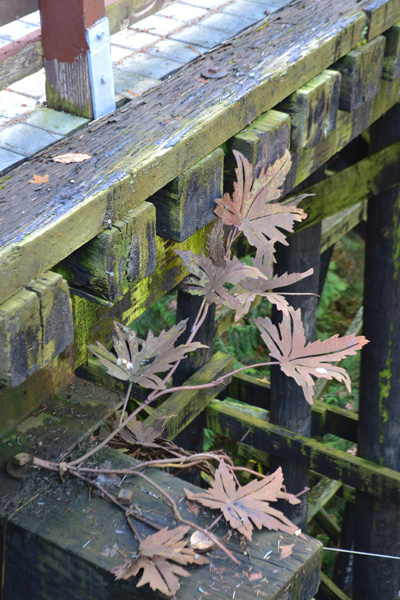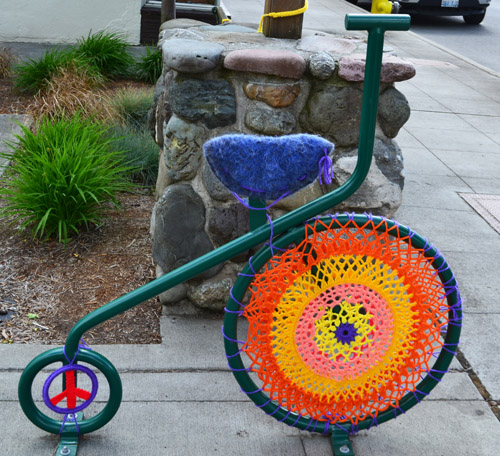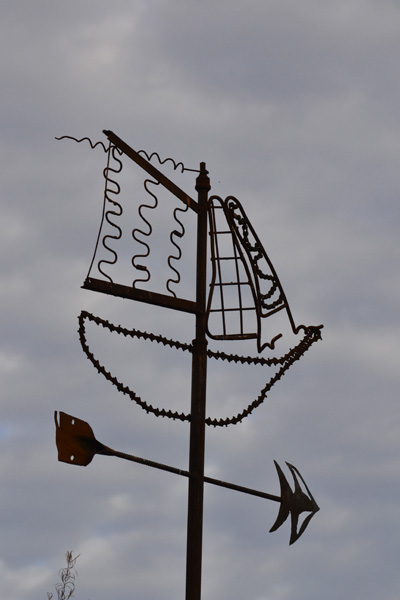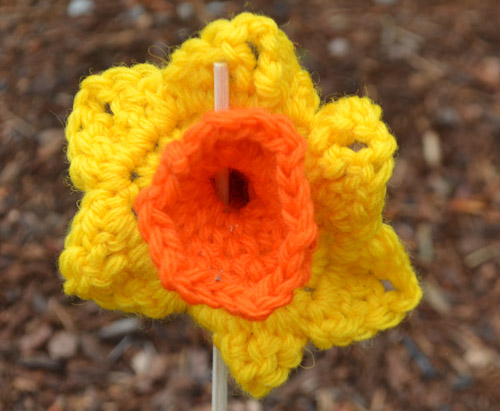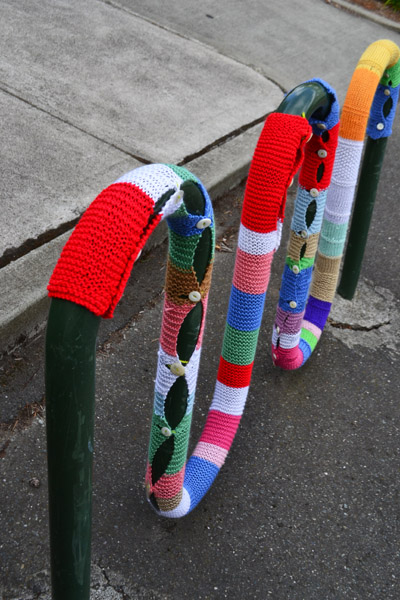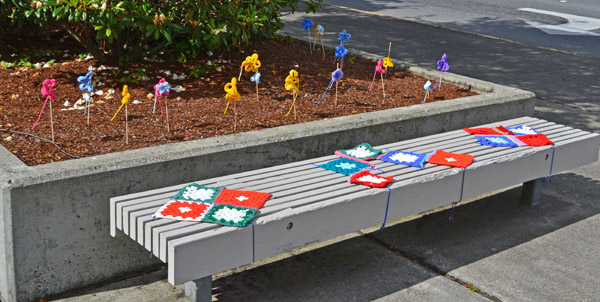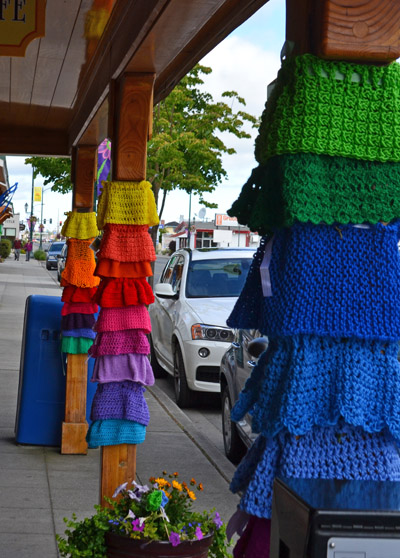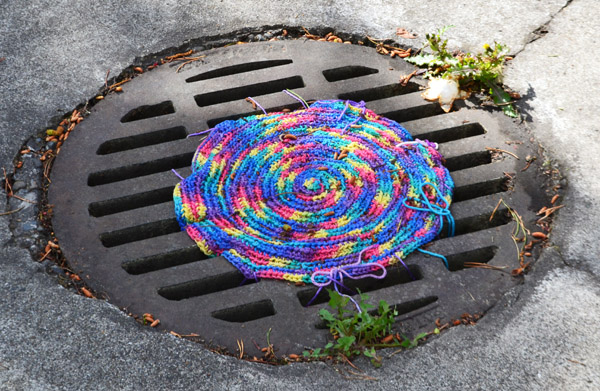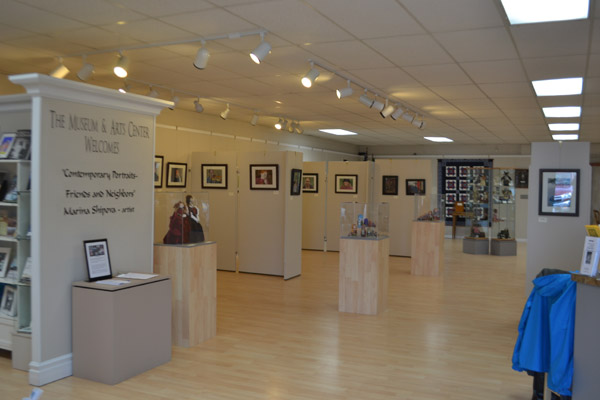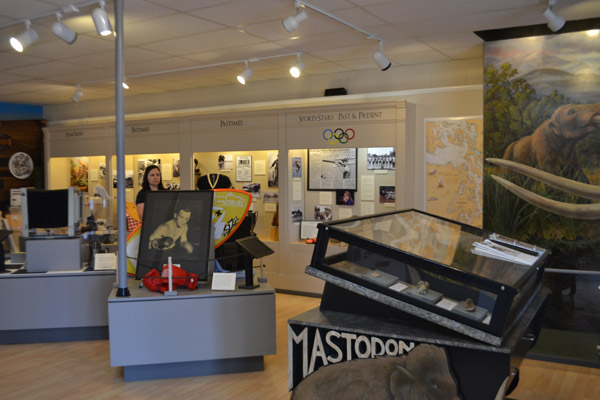Metal art adorns the Johnson Creek Trestle. These leaves are near the east end of the trestle. Further west, deeper in shadow and close to the creek, are metal fish that defied capture.
Category: Art
Glancing back at 2012: Whimsy
Which way?
My kind of grafitti, 2 of 2
Yarn bombing is a seemingly spontaneous art movement that’s popped up around the world. But to look at some of the work that’s now on display in Sequim, it seems like lots of people kept themselves busy all winter.
I can imagine conversations: “Now that looks interesting. What are you working on?” “Oh, just a little something for a chilly looking bike rack.”
The daffodil at top was in one of the “flower beds” on the plaza where this was taken.
I had a hard time deciding which photos to post. There were wrapped and garlanded trees, other decorated benches, and a snake draped over a street sign. It’s a unique and cheerful sight. Thank you, Fiber Arts Bombadiers!
My kind of grafitti, 1 of 2
Yesterday was International Yarn Bombing Day and Sequim became a target. Fiber artists – knitters, felters, weavers, crocheters – from the North Olympic Peninsula adorned our streets with random color and whimsy.
The Sunshine Cafe on Washington Street was one of the first targets earlier this week.
Nothing was safe as the city was cloaked in bits and pieces of fibrous splendor.
More shots tomorrow.
Museum & Arts Center
I’m embarassed to admit that I’ve lived in Sequim two years before I finally darkened the doorstep of the Museum & Arts Center (MAC). Partly, I didn’t know what to expect. And, frankly, I’m accustomed to big museums where I can melt away, be anonymous, and take it in as I wish, mistakenly admiring a random fire alarm if it suits me.
The MAC is small, comfortable, and pleasant. The art above has just been changed out for a juried art show and sale, part of the annual Sequim Irrigation Festival.
There are also history exhibits – human history of the region and a small exhibit on the Manis Mastodon, a fascinating archaeological find near Sequim that recently established human habitation here fully 13,800 years ago. The Manis site was excavated in the late 1970s and one of the first rib bones of the mastodon found at the site revealed a spear point embedded in the bone. CT scans last year confirmed that the point had been finely worked by human hands; DNA tests established human habitation 800 years before the Clovis peoples who had previously been thought to be the earliest inhabitants of North America. Clare Manis Hatler, on whose property the dig took place, doesn’t exaggerate when she says, “I’ve got the oldest bones around.” Several are exhibited at MAC.
Museum & Arts Center
I’m embarassed to admit that I’ve lived in Sequim two years before I finally darkened the doorstep of the Museum & Arts Center (MAC). Partly, I didn’t know what to expect. And, frankly, I’m accustomed to big museums where I can melt away, be anonymous, and take it in as I wish, mistakenly admiring a random fire alarm if it suits me.
The MAC is small, comfortable, and pleasant. The art above has just been changed out for a juried art show and sale, part of the annual Sequim Irrigation Festival.
There are also history exhibits – human history of the region and a small exhibit on the Manis Mastodon, a fascinating archaeological find near Sequim that recently established human habitation here fully 13,800 years ago. The Manis site was excavated in the late 1970s and one of the first rib bones of the mastodon found at the site revealed a spear point embedded in the bone. CT scans last year confirmed that the point had been finely worked by human hands; DNA tests established human habitation 800 years before the Clovis peoples who had previously been thought to be the earliest inhabitants of North America. Clare Manis Hatler, on whose property the dig took place, doesn’t exaggerate when she says, “I’ve got the oldest bones around.” Several are exhibited at MAC.
